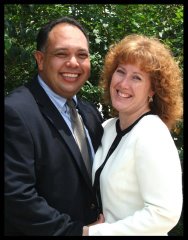Roaring Brook Press, 2002
ISBN 1-59643-080-X
Summary:
Mouse and Rabbit manage to get their plane stuck in the branches of a tree. Well meaning Rabbit rounds up an entire zoo-load of animals to rescue the plane via somewhat unconventional means. Despite the inevitable disaster created by Rabbit's rescue plan, Mouse accepts his friend's shortcomings, and in the true spirit of friendship, saves him from the angry animals. Predictably, because "whatever he does, wherever he goes, trouble follows," Rabbit and Mouse end up stuck again.
Critical Analysis:
The strength of My Friend Rabbit is in the illustrations. Not that the story is bad; it's simply a sweet, run-of-the-mill, predictable children's story. The illustrations are what stand out.
One of my favorite pages is when Rabbit first presents his idea for getting the plane down from the tree. The page has no text, but Mouse sits on the left watching with curiosity while Rabbit pulls the tail of what appears to be a large animal in from the right. With thick black borders around the page, the effect is almost that of an actor being pulled on stage from the wings.
The first animal is an elephant, followed by other unlikely "helpers" such as a rhinoceros, a hippo, an alligator, and a family of ducks. Rohmann unexpectedly turns the illustrations vertical across both pages (requiring the reader to turn the book) to show the entire animal ladder. The potential kinetic energy of all that stacked animal flesh coincides with the climax of the story when Rabbit has another one of his misguided ideas.
Review Excerpts:
A simple story about Rabbit and Mouse, who, despite Rabbit's penchant for trouble, are friends. When Rabbit launches his toy airplane (with Mouse in the pilot seat at takeoff) and it gets stuck in a tree, he convinces his friend that he will come up with a plan to get it down. He does so by stacking animals on top of one another (beginning with an elephant and a rhinoceros) until they are within reach of the toy. The double-page, hand-colored relief prints with heavy black outlines are magnificent, and children will enjoy the comically expressive pictures of the animals before and after their attempt to extract the plane. The text is minimal; it's the illustrations that are the draw here.
Kristin de Lacoste
School Library Journal, May 2002, Vol. 48, Issue 5
Connections:
- Caldecott Medal Winner
- Why does the author repeat the line, "Whatever he does, wherever he goes, trouble follows"? Do you know anyone like that?
- Why do you think the illustrator drew parts of the illustrations off the page?
- Write a continuation of the story: how will Rabbit and Mouse get down this time?
- Writing prompts: Write about a time you were able to help a friend or a time when a plan you made did not work out the way you expected.
